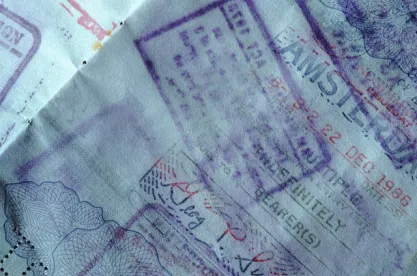This advisory summarizes key travel and employment issues if you are an F-1 student with Optional Practical Training (OPT) employment eligibility and an H-1B filing on your behalf has been accepted by US Citizenship and Immigration Services (USCIS). USCIS will adjudicate these visa petitions over the next few months and approved petitions will have an October 1, 2014 start date. The good news is that your OPT employment card is automatically extended, by operation of law, with validity to September 30, 2014 under the “cap-gap” OPT extension rule. This means you can continue working legally even after the expiration of your OPT employment card. We recommend that you alert your school’s international student office by providing that office with a copy of the H-1B receipt notice. The international student office will use this receipt information to update your I-20 to show the extension of your OPT.
International travel between now and October 1 is complicated, and whether you can travel and return to work before October 1 depends on your specific situation. As a general rule, it is safest not to travel during the cap-gap period. In all cases, travel as an F-1 student with OPT requires a valid F-1 visa stamp, Form I-20 with updated authorization for travel from your school’s international student office, the OPT Employment Authorization Document (EAD), and proof of current employment in the US (employer letter and/or recent pay slips).
Please note that any international travel carries risks. If your F-1 visa has expired and you need to apply for a new one, you may face delays for extra security clearances (221(g) administrative processing), or you may not be able to prove you have nonimmigrant intent, which is required for F-1 visa applications. Furthermore, even with a valid
1. My OPT employment card has not expired and my H-1B petition has been accepted, but not yet approved.If you travel outside the US in this situation, the change of status part of your 2. My OPT employment card has not expired and my H-1B has been approved.In this situation, according to guidance from USCIS, it is possible to travel and not abandon the change of status because it has already been approved and is for a date in the future. Since there is no abandonment, once you return to the US on your F-1 visa, your change of status will be effective on October 1. However, there is a very real risk in traveling in this scenario as upon approval by USCIS of your H-1B petition, the Student and Exchange Visitor Information System (SEVIS) may no longer reflect that you are an F-1 student and you may have difficulties entering the US in F-1 status. 3. My OPT employment card has expired.In this situation, you are eligible to remain in the US and continue working under the cap-gap extension rule discussed above. However, there is no provision or guidance from USCIS that allows for reentry during this cap-gap period once your EAD has expired. Therefore, if you must depart the US during this period, you will not be able to return to the US until you obtain an
4. I need to depart the US and will not return until October 1 or later and will apply for the
|
The examples above all deal with the situation where the H-1B filing has been accepted by USCIS out of the quota. If the H-1B petition filed on your behalf was rejected, you may choose to travel if you have a valid F-1 visa stamp, Form I-20 with updated authorization for travel from your school’s international student office, the OPT Employment Authorization Document (EAD), and proof of current employment in the US in the form of an employer letter and/or recent pay slips. You may also stay in the US for 60 days after the expiration of your F-1 OPT status, but only for purposes of settling your personal affairs and domestic travel within the US. You are not allowed to work during this 60-day grace period. If you travel outside the US during the 60-day grace period, even if you do not plan to work upon your return, you will not likely be readmitted because you will be deemed to have departed the US at the conclusion of your F-1 program, thus fulfilling the need for the 60-grace period. The 60-day grace period is not meant to facilitate international travel and reentry — it is designed to allow F-1 students to remain in the US at the end of the F-1 program to settle their affairs until they are ready to depart the US.





 />i
/>i
